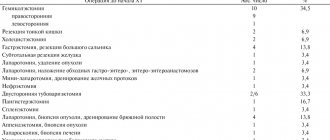The word “leprosy” is familiar to many people - it is the name of a group on many social networks, in which a kind of cynical humor reigns on a variety of topics. In medical circles, the Greek term "lepra" is translated as "leprosy" and means Hansen's disease. What kind of illness is this? How dangerous is he?
Leprosy is a chronic infectious disease caused by the bacteria Mycobacterium leprae. First of all, bacilli affect the skin, peripheral nervous system, respiratory and visual organs.
In the old days, people with leprosy were called lepers and were almost always sent into exile (by decision of the community through a popular vote of shards - ostracism). Even the most experienced healers of Ancient Egypt, China, and India considered it incurable. For this reason, lepra has received many names: the mournful or Phoenician disease, the lazy death, the disease of St. Lazarus.
The modern name for leprosy is hansenosis, hanseniasis (from the name of the Norwegian scientist Gerhard Hansen, who discovered the leprosy bacterium in 1873).
The pathogen is an acid-resistant rod with pointed ends, which is capable of forming a granular form and an A-form. This mycobacterium multiplies slowly and over time forms a whole family in the body that resembles a cluster of balls.
Remember: infection occurs through the respiratory tract.
Please note:
- a person can become infected only after close, prolonged contact with a sick person;
- Children are more susceptible to leprosy than adults.
According to statistics, more than 180 thousand people suffer from hansenosis worldwide, most of whom live in Asia, Africa, and the USA. Treatment of sick people takes place in special leper colonies, which protect others from carriers of the disease.
According to the World Health Organization, countries such as Bangladesh, Norway, Angola, Sudan, Ethiopia, Tanzania, Sri Lanka, Nepal, Brazil, the Philippines, Madagascar, the Republic of the Congo, Myanmar, Nigeria, remain areas of high endemicity. Mozambique.
Leprosy symptoms:
- skin lesions (ulcers, bumps, lumps);
- loss of sensation in the peripheral nerve;
- muscle weakness, numbness of the lower (upper) extremities;
- aching joints;
- drowsiness, impaired sweating;
- intoxication, headaches;
- loss of eyebrows, drooping earlobe;
- frequent nosebleeds.
The incubation period can last from 3 to 5 years, rarely up to 20. To establish a diagnosis, the patient must undergo a biopsy (a research method in which the affected skin area is carefully examined under a microscope).
Why Dirty and Lepra lost to VKontakte
The creator of the Dirty and “Lepra” communities, Jovan Savovic, explained why to impose democracy on a closed community, and why they, the founders of the first Internet resources where users communicate collectively, never looked at the classic VK public pages and newfangled messenger channels as opponents. And that’s why they lost: “This is neither a plus nor a minus. It’s like we were a longtail to VKontakte before VKontakte appeared.”
“It seems to me that we made a number of mistakes in moderating the Ukrainian issue, because we always took it lightly. And now we are trying to prevent threats and calls for murder. Apart from this, we don’t do anything special - people organize their communities themselves and moderate them based on the rules they set. And we do not interfere in this, except when someone calls for murder. I don’t know how good this is, but this is what we came to over time, then interfering, then not interfering again. It’s hard to quarrel with people, no one wants to re-educate them, and explaining that they behave ugly is not particularly sensible and does not lead to anything.
— You have always had the concept of self-government. Why? Does it really work that well?
- She changed a lot. We created democracy: elections were initially built into Leper Colony, and we did them on Dirty three years ago. Each community has an elected president, he can run for office. And it turned out that few people were interested in this. This is one of the striking experiences of recent years: I imposed democracy on the Russian people, and they all told me that I was a fool. It’s really very cool when you say: “You’re going to manage everything,” and they look at you and say: “Why, I’m still an ass%, God, what are you thinking about?” It continues exactly like this. Then the people who received power shit everything as a sign of protest, showing that they should not have been given power.
I recently looked at opinion polls according to which 80% of citizens believe that they do not influence anything in the country. And some “Echo of Moscow” talks about this with an openly negative connotation, as if we have bad results. But based on my experience, I can say that these 80% think that everything is fine. According to the principle: if I could influence something in the country, then anyone could, and so we would fuck up the whole country. And so, I can’t, my neighbors can’t - and everything is fine and clear.
In general, blah blah blah from a Yugoslav expat about what stupid slaves Russians are. Bros are such bros, yeah.
I personally stopped visiting Dirty after it turned into a militant leaflet of the “opposition.” You may ask - why the hell did Jovan encourage all this liberation that took over the site and fell into complete inadequacy? So his websites are a hangout place for bored Moscow office plankton, with all that it entails. If you don’t adapt to this public, they will go to another virtual “anti-cafe”, after which the status of “creator of Lepra and Dirty” will sound something like “creator of Anecdote-ru”. But Jovan has other ambitions.
However, it was precisely as a result of these ambitions of his that the sites turned into inedible shit, but Jovan still didn’t understand anything.
Everyone else should remember that in the first elections on the Internet, somewhere in the mid-90s, a drunken dwarf won. Because people are like that. “Unlimited freedom of expression” instantly leads to the victory of stupid, irresponsible cattle, no matter what - liberal or authoritarian, left or right. Simply because stupid rednecks are always in the majority. Accordingly, any resource in which “democracy” is structured, understood as the power of the majority, turns into gugno.
PS. Well, after that - an informative picture:
The popularity of ad blockers in some countries around the world
This is all the more funny because Google is going to add a blocker of “non-Google” ads to the Google Chrome browser, so to speak, in the basic configuration. In 2021, Gugel earned more than $60 billion from advertising - but it’s not enough for him, he wants more - and for this he needs to crush his competitors.
About life after the leper colony
After discharge from the hospital, the life of patients develops quite well: they return to their families, lead a normal lifestyle, and can work. Professional restrictions apply to work in child care institutions, catering, and healthcare. We also do not recommend working in places where the nature of the work is associated with heavy physical labor and hypothermia - this can provoke a relapse.
Illustrations: Anna Lukyanova
In epidemiological terms, leprosy is less dangerous than, for example, tuberculosis. Persons discharged from leper colonies, and especially their family members, do not pose any danger to others. But at the moment, our patients still hide their status. We still encounter discriminatory attitudes towards leprosy patients and their family members. This has deep historical roots; prejudice against leprosy becomes a serious obstacle to the restoration of a person’s normal position in society.
Rarely, relapses of the disease occur. Most often, cases of relapse occur among patients with severe lepromatous type of leprosy and in patients who violated the treatment regimen. There may be many other reasons: changes in hormonal status, the presence of chronic diseases of the cardiovascular system, liver, psychotrauma, stress, alcohol abuse, past infectious diseases, hypothermia, excessive physical activity.
Causes of leprosy
The cause of leprosy is Mycobacterium leprae, which was discovered by the Norwegian physician Hansen in 1874. Therefore, another name for leprosy is Hansen's disease. The pathogen looks like a straight or slightly curved stick with rounded ends. The length of the mycobacterium is 1.0 - 7.0 microns, and the diameter is from 0.2 to 0.5 microns. It is resistant to acids and alcohol and is an obligate intracellular parasite, invading tissue macrophages.
The main source of leprosy infection is a sick person who releases mycobacterium leprosy into the environment through saliva, nasal mucus, breast milk, semen, urine, feces and wound discharge. The causative agent of leprosy penetrates the skin and mucous membranes, from there into the nerve endings, lymphatic and blood vessels. With the flow of blood and lymph, they spread throughout the body and affect the internal organs.
A healthy person is practically not susceptible to leprosy. The risk group for infection includes children, alcoholics, drug addicts and people with chronic diseases, especially those with weakened immune systems.
About leper colonies
The Research Institute for the Study of Leprosy was originally a temporary shelter for lepers (now the word “leprosy” is less and less used in relation to patients). Its history begins on September 1, 1896. The shelter was built on the outskirts of Astrakhan in the old customs building. Like other anti-leprosy institutions in the Russian Empire, it was supported by benefactors. Doctors visited patients once a week. Since 1922, the Astrakhan shelter began to be called a leper colony, then from the outskirts it moved to the Bohemia garden in one of the picturesque city places. In the Soviet Union, the problem of leprosy was approached centrally: hospitals were taken over by local health commissariats, doctors worked not only with the sick, but also with their contacts, which turned out to be an extremely effective measure. And in the 40s of the 20th century, a cure for leprosy finally appeared, which radically reversed the spread of the disease.
Illustrations: Anna Lukyanova
Today in Russia there are four anti-leprosy institutions, three of which are in the south of the country: in Astrakhan (the Astrakhan region is an endemic region for leprosy, historically), in the Krasnodar Territory, in Stavropol, and one is near Sergiev Posad near Moscow. Patients spend an average of six months or a year there (in rare cases, hospitalization lasts up to three years) and are treated with combination therapy. Physiotherapy is of great importance in treatment, as it prevents complications and disability.
Now leper colonies have lost the usual historical appearance of isolation wards. They look like any hospital. Living conditions are not much different from standard hospitals. In the Astrakhan leper colony, patients live one or two in one room. In the department and patient rest areas there is a large landscaped green area, gazebos for relaxation, and a garden with fruit-bearing trees. Many patients take care of plants during treatment, some even organize small vegetable gardens. In Soviet times, when leper colonies were more closed and were there for a long time, there was such a thing as occupational therapy, patients worked, but today this does not exist. If a person does not excrete bacteria and is not contagious to others, then during a long hospitalization he can go to see his family - this has a beneficial effect on our patients. The leper colony now is not a prison, as many imagine.
When the patient undergoes pathological processes on the skin and ceases to be infectious to others, he is transferred to outpatient treatment. But the medical care does not end there - he remains under lifelong dispensary observation.
Treatment
Medicine has made great strides forward and therefore leprosy today is curable, especially if the disease is “captured” at an early stage, when the person has not yet become disabled. Treatment of such patients is carried out in leper colonies - special anti-leprosy institutions or on an outpatient basis. Leper colonies have been known since the Middle Ages, when society tried to limit the contact of lepers with healthy people.
- Currently, patients with multiple skin rashes and positive results of bacterioscopic examination are admitted to anti-leprosy medical institutions for the purpose of conducting the primary stage of treatment.
- Also, patients who are under dispensary registration are sent to the leper colony if they develop a relapse of the disease.
- Patients with a small number of rashes and negative results of bacterioscopic examination are treated on an outpatient basis.
Treatment of leprosy should be carried out comprehensively and include the simultaneous administration of two to three anti-leprosy drugs with the parallel administration of stimulants and restoratives (methyluracil, vitamins, autohemotransfusion, pyrogenal, gamma globulin and other drugs).
- The main anti-leprosy drugs include sulfone drugs (diaphenylsulfone, solusolphone and diucifone).
- Antibiotics are used together with them: rifampicin, lampren, ofloxacin, ethionamide, clofazimine.
- The duration of one course of treatment with anti-leprosy drugs is 6 months. If the patient tolerates the therapy well, there are no breaks between courses. Complex treatment in one course includes the prescription of one sulfone drug and 1 - 2 antibiotics. To prevent the development of drug resistance, drugs are alternated every 2 courses of therapy.
Treatment of patients with leprosy is long-term and lasts from 12 months to 2 – 3 years.





